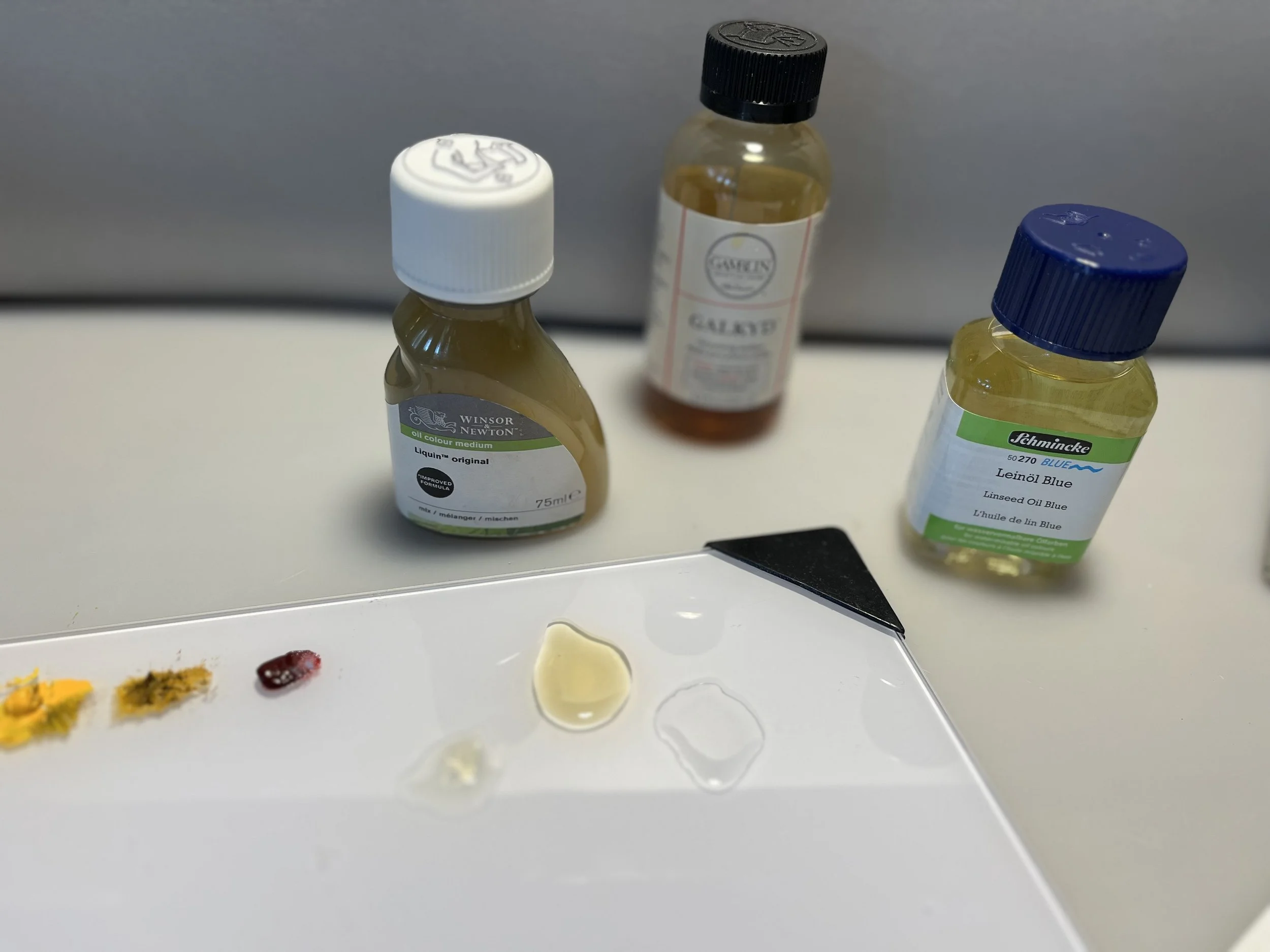The Secret Sauce of Oil Painting: Understanding Mediums
Ever wonder why oil painters swear by their favorite mediums? Let’s demystify the options and help you discover the one that fits your style best!
Oil paints are made with binders, which are different types of oils such as walnut or linseed. When you use paint straight out of the tube, they often are very thick. An additive, such as an alkyd or oil medium can help thin them. This makes them run across the canvas smoother, aiding in beautiful blends. A medium can also enhance the transparency of oils, making your glaze perfection.
Types of Mediums
There are quite a few different mediums that are available for use in oil painting. Before you decide which one is for you, it’s important that you first think about what it is that you're wanting to achieve while using them. Do you want fast, or slow drying? Do you paint in thick or thin layers? It’s important to keep these things in mind before you decide to start using one, or else you may end up frustrated with the results. Listed below are a few of the most common mediums, and what they’re used for.
Alkyds
Liquin Original - a thick gel that helps cut dry time in half
Galkyd - also a thick gel that helps cut dry time in half
Oils
Linseed - oil that’s most commonly used. Has a moderate to low dry time and can yellow over time.
Walnut - probably the highest quality of oil you can use. Has a low dry time and does not yellow like linseed.
Safflower - has a low dry time. Can preserve the brightness of paints and has a low yellowing tendency.
From left to Right: Liquin; has a gel like consistency. Galkyd, has a think, slightly sticky consistency. Linseed oil; slightly runny compared to the other two mediums.
Fast Dry
Painting in layers daily on the same canvas requires a thin layer of oil paint plus a fast drying medium. Alkyds, such as Liquin and Galkyd are what I have worked with. Personally, I do not like working with Galkyd. I have found that it leaves a bit of a sticky texture after drying. Liquin, however, has been perfect for my needs. It makes the oils flow smoothly, and cuts down my dry time by about half.
Rough textured canvas panel. Gamblin Ultramarine Blue. From top to bottom: Straight out of the tube, liquin added, galkyd added, linseed oil added. You can see a slight tonal change with the different mediums.
Slow dry mediums
Some artists enjoy having slow drying mediums added to their paints so they can go longer periods in between painting, working alla prima, or when working the final layers of the painting. Oils add more fat to the paint, so important when working in layers to keep in mind the fat over lean rule.
When you decide to start using mediums, it’s important to only use a small amount. If you’re painting in layers, you will need to slowly add in a bit more with each layer to maintain the lean over fat rule. If you accidently use too much medium, it can mess up the integrity of the paint.
Mediums are personal, and every artist has their own secret sauce. Share yours below—what medium changed your workflow, and why? Let’s build a space where painters learn from each other.


